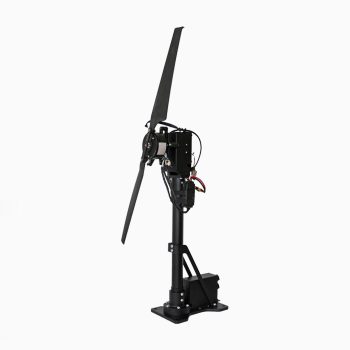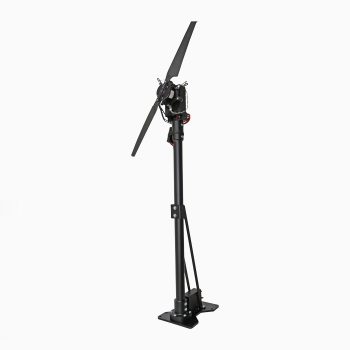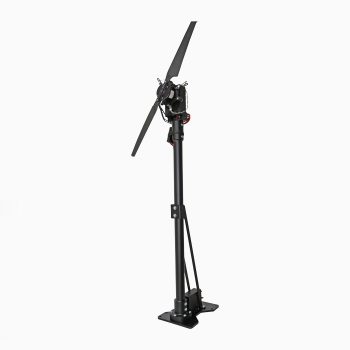Designing a drone or RC plane is becoming more popular as people explore different application areas for UAVs. The most fundamental step in designing a drone is selecting the appropriate propulsion system.
In this article, we explain some of the fundamental parameters that govern the selection of brushless motors for drones and RC planes.
1. Thrust to Weight Ratio
Before going to the market and shopping for a brushless motor, you should have a preliminary weight estimation of the drone. These weight estimations should include all the components of the drone; structure (frame), power group, propulsion system, and other accessories. The first parameter to consider in selecting a motor is the thrust-to-weight ratio. The rule of thumb is for the motors to be able to produce 100% more thrust than the actual weight of the drone (2:1) to enable the drone to hover at just 50% throttle. The thrust-to-weight ratio of a racing drone is significantly higher than that of a typical multirotor.
2. Motor Size
Typically, a four-digit number is used to categorize brushless motors. For instance, in a motor with nomenclature like 2311, the first two digits indicate the stator’s diameter (in mm). The final two numerals indicate the stator height (in mm). In essence, the magnitude of torque generated by a brushless motor is a function of the motor stator size. The actual size of the motor to be chosen depends on the torque requirement and the frame (structure) of the drone.
3. KV Ratings
Another crucial component of the motor is the KV rating. The KV rating refers to the motor’s rpm per volt.For instance, if you select a motor with a 1000 KV and a 12 V lipo battery, the total RPM is 1000 * 12 = 12 000.The RPM decreases after putting the propeller on the motor because of air resistance. A high KV motor spins the propellers faster but draws more current. Due to this, large propellers are typically utilized with low KV motors while lighter, smaller propellers are preferable for high KV motors.It will require more torque to spin a larger propeller at a high speed with a high KV motor. This will draw more current and produce too much heat to provide the necessary torque. This overheating could harm your motor.
4. Number of Poles
N and P are essentially magnets and poles. If you look at the specifications for brushless motors, they include things like 12N14P. The number before N and the number before P are the electromagnets in the stator and the permanent magnets in the bell, respectively.The number of north and south poles on the rotor is constant. There are six north poles and six south poles, for instance, in a 12-pole engine. This motor is also referred to as a six-pole pair motor. The number of poles is linked to KV ratings of the motor and the Phase of the motor.
5. Inrunners and Outrunners
There are two distinctly different motor kinds that you can find, which might be worth mentioning. One runs inside, and the other runs outside.Motors classified as inrunners have a shaft that revolves inside the motor’s exterior casing. a common component in RC helicopters.Outrunners are motors in which the entire outer casing revolves around the center while being connected to a shaft, propeller, or both.
Our Dynotis helps select the best brushless motors and optimize your efficiency. It is developed to make your design easier and better, a perfection towards excellence.




